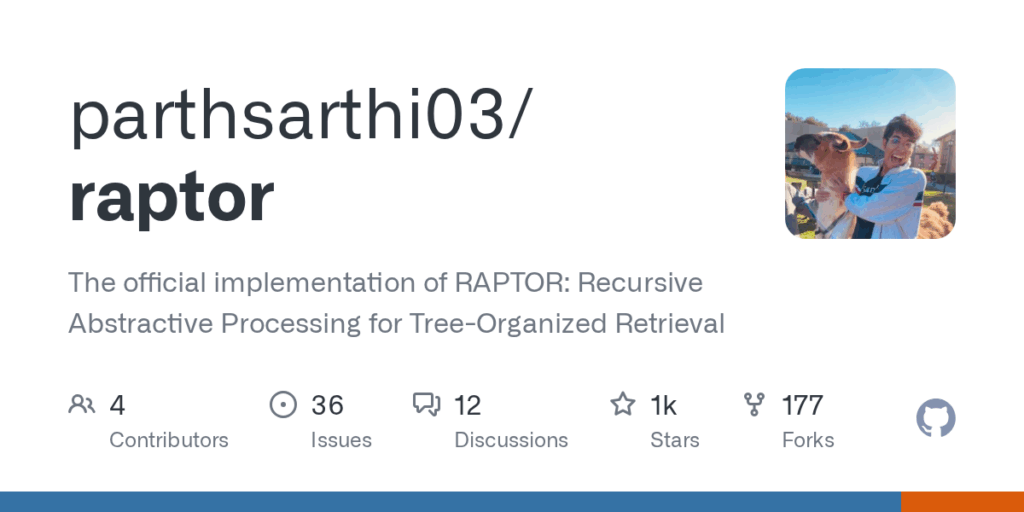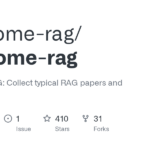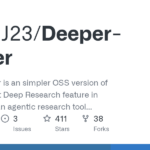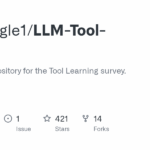raptor
Basic Information
This repository is the official implementation of RAPTOR, short for Recursive Abstractive Processing for Tree-Organized Retrieval. It serves as a reference codebase implementing the RAPTOR method and is intended to support researchers and engineers who work on retrieval tasks that exploit hierarchical or tree-structured document organization. The project focuses on combining recursive processing with abstractive summarization steps to improve retrieval over tree-organized data. Its purpose is to enable reproduction of the RAPTOR approach, to facilitate experimentation with recursive and hierarchical retrieval strategies, and to provide an implementation that can be studied, adapted, or integrated into retrieval-augmented systems and research workflows.








